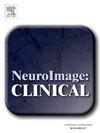Deep learning based tractography with TractSeg in patients with hemispherotomy: Evaluation and refinement
IF 3.4
2区 医学
Q2 NEUROIMAGING
引用次数: 0
Abstract
Deep learning-based tractography implicitly learns anatomical prior knowledge that is required to resolve ambiguities inherent in traditional streamline tractography. TractSeg is a particularly widely used example of such an approach. Even though it has exclusively been trained on healthy subjects, a certain level of generalization to different pathologies has been demonstrated, and TractSeg is now increasingly used for clinical cases. We explore the limits of TractSeg by evaluating it on a unique dataset of 25 patients with epilepsy who underwent hemispherotomy, a type of surgery in which the two hemispheres are surgically separated. We compare results to those on 25 healthy controls who have been imaged with the same setup.
We find that TractSeg generalizes remarkably well, given the severity of the abnormalities. However, to our knowledge, we are the first to document cases in which TractSeg erroneously reconstructs (“hallucinates”) tracts that are known to have been surgically disconnected, and we found cases in which it implausibly continues tracts through obvious lesions. At the same time, TractSeg failed to reconstruct or undersegmented some tracts that are known to be preserved.
We subsequently propose a refinement of TractSeg which aims to improve its applicability to data with pathologies, by using its Tract Orientation Maps as an anatomical prior in low-rank tensor approximation based tractography such that tracking is guaranteed to continue only where presence of the tract is directly supported by the data (“data fidelity”). We demonstrate that our extension not only eliminates hallucinated tracts and reconstructions within lesions, but that it also increases the ability to reconstruct the preserved tracts, and leads to more complete reconstructions even in healthy controls. Despite these advances, we recommend caution and manual quality control when applying deep learning based tractography to patient data.
基于深度学习的神经束造影与TractSeg在半球切开术患者中的应用:评估和改进
基于深度学习的肛管造影隐式学习解剖学先验知识,解决传统流线肛管造影固有的模糊性。TractSeg是这种方法的一个特别广泛使用的例子。尽管TractSeg专门针对健康受试者进行培训,但已证明它对不同病理有一定程度的概括作用,并且TractSeg现在越来越多地用于临床病例。我们通过对25名癫痫患者的独特数据集进行评估来探索TractSeg的局限性,这些患者接受了半球切开术,这是一种手术,其中两个半球被手术分离。我们将结果与25名健康对照者的结果进行了比较,他们都用相同的装置进行了成像。我们发现,考虑到异常的严重程度,TractSeg的泛化效果非常好。然而,据我们所知,我们是第一个记录TractSeg错误重建(“幻觉”)已知手术断开的束的病例,我们发现在一些病例中,它令人难以置信地继续通过明显的病变。同时,TractSeg未能重建或欠分割一些已知保存的束。我们随后提出了TractSeg的改进,旨在提高其对病理数据的适用性,通过使用其束定向图作为基于低秩张量近似的束状图的解剖先验,这样跟踪保证仅在数据直接支持束存在的情况下才能继续(“数据保真度”)。我们证明,我们的延伸不仅消除了病变内的幻觉束和重建,而且还增加了重建保存束的能力,甚至在健康对照中也能实现更完整的重建。尽管取得了这些进展,但我们建议在将基于深度学习的肌腱束造影应用于患者数据时要谨慎并进行手动质量控制。
本文章由计算机程序翻译,如有差异,请以英文原文为准。
求助全文
约1分钟内获得全文
求助全文
来源期刊

Neuroimage-Clinical
NEUROIMAGING-
CiteScore
7.50
自引率
4.80%
发文量
368
审稿时长
52 days
期刊介绍:
NeuroImage: Clinical, a journal of diseases, disorders and syndromes involving the Nervous System, provides a vehicle for communicating important advances in the study of abnormal structure-function relationships of the human nervous system based on imaging.
The focus of NeuroImage: Clinical is on defining changes to the brain associated with primary neurologic and psychiatric diseases and disorders of the nervous system as well as behavioral syndromes and developmental conditions. The main criterion for judging papers is the extent of scientific advancement in the understanding of the pathophysiologic mechanisms of diseases and disorders, in identification of functional models that link clinical signs and symptoms with brain function and in the creation of image based tools applicable to a broad range of clinical needs including diagnosis, monitoring and tracking of illness, predicting therapeutic response and development of new treatments. Papers dealing with structure and function in animal models will also be considered if they reveal mechanisms that can be readily translated to human conditions.
 求助内容:
求助内容: 应助结果提醒方式:
应助结果提醒方式:


